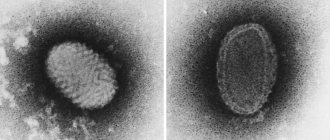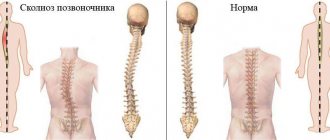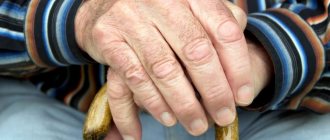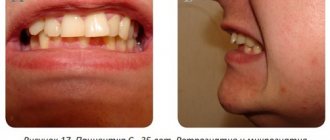Hand trembling in older people usually does not cause much surprise; we most often attribute this disorder to age-related changes. However, involuntary and uncontrollable shaking movements of the limbs (doctors call this tremor) worry not only the elderly: the palms of a baby, a teenager, and a mature person can shake. Let's try to figure out what hand tremor is, why it happens, and what treatment helps with this condition.
Why do young and old hands shake?
Why your hands shake: reasons
Tremor refers to an involuntary oscillatory movement (shaking) caused by muscle contraction. Trembling can be short-term and constant, and the amplitude of movements can also differ - from barely noticeable to very frequent and sweeping.
Tremor can affect different parts of the body: when seeking medical help, some patients complain of trembling in the limbs, others have a shaking head, and in others the whole body. Trembling can be observed on one side (tremor of one hand) or be symmetrical. In this article we will take a closer look at such a condition as tremor in the hands.
Experts distinguish between physiological and pathological tremor.
- In the first case, we are talking about a functional disorder (primary tremor), not associated with any disease - as a rule, such a disorder is temporary and does not require special treatment.
- Pathological (secondary) tremor is a symptom, consequence and/or complication of a certain disease.
Why is shaking dangerous?
With systematic heavy drinking and constant negative effects of ethyl alcohol, trembling manifests itself not only in the hands, but also in other parts of the body. A common myth is that such an unpleasant symptom can be eliminated by taking a new portion of alcohol: strong drinks or beer. But this is not help, it only worsens the problem, each subsequent portion of alcohol only leads to complications.
Doctors distinguish the following types of tremor:
- Physiological. A characteristic sign is hand trembling.
- Essential. Such tremors are present only in certain muscle groups.
- Cerebellar. It occurs only occasionally at rest and usually appears during movement.
- Parkinsonian. This trembling, on the contrary, is characteristic of a state of rest.
External trembling is a reflection of internal problems. Therefore, such an ailment cannot be left without medical help. A temporary phenomenon very quickly becomes chronic. It is difficult for a person with tremors to even hold a spoon in his hands. The trembling will move from the hands to the legs, and it will become more difficult for the alcoholic to move. In such a state, a person will definitely not be able to work, moreover, take care of himself independently. Tremor is a sign of severe alcohol dependence, usually followed by hallucinations.
Physiological (benign) tremor
- Excitement, fear and anxiety are a fairly common explanation for why arms and legs shake. This state is well known to emotional people who are intensely experiencing certain events and who take everything that happens around them to heart. In such situations, people say “the ankles are shaking,” implying feelings of strong excitement. Once a person calms down, the tremor disappears on its own.
- Prolonged physical stress is another cause of involuntary trembling of the limbs. Professional athletes, people whose profession involves strenuous work with small objects (jewelers, watchmakers, surgeons), as well as loaders - it is not uncommon for them to experience muscle trembling under tension.
Why do young and old hands shake?
- Trembling limbs in infants is often due to the fact that their nervous system is not fully formed. Temporary tremor occurs under the influence of various stimuli: for example, the child is hungry, scared, does not want to bathe, change clothes, etc., and against the background of all this, rhythmic muscle contraction can be observed. Of course, parents need to ensure that the baby is monitored by a specialist to make sure that the baby’s development is progressing normally (tremors are often observed in the first months of a child’s life in cases where there was a difficult pregnancy and/or birth injuries).
- Hand trembling at a young age can be associated not only with anxiety (for example, during exams), physical overexertion during sports training, but even with ordinary hypothermia. The latter sometimes leads to involuntary muscle contraction, resulting in shaking hands. Another reason for shaking hands in teenagers is hormonal imbalances.
- People who abuse alcoholic beverages and also take various stimulants (drugs, tranquilizers) deserve special attention. Why are their hands shaking? Alcohol and drugs overstimulate nerve cells (resulting in uncontrolled muscle contraction), which can lead to damage to the nervous system and brain.
Alcohol addiction is one of the reasons why hands shake
It should be noted that temporary trembling of the hands can be a consequence of the effects of tonic drinks (strong tea, coffee), as well as medications. Before taking any medicine, you need to carefully study the instructions - tremor may be indicated in the side effects section (some chemical compounds, affecting the psychoneurological sphere, cause undesirable consequences).
If trembling of the limbs is a functional disorder, it is enough to eliminate the provoking factor, and the unpleasant phenomenon will go away on its own. For example, in case of alcohol poisoning, it is necessary to detoxify the body, and hand tremors will disappear (provided that at this stage brain damage has not yet occurred and toxic polyneuropathy has not developed). If the tremor bothers you for a long time (more than two weeks), you need to undergo an examination.
Trembling large and small
Trembling throughout the body or in the limbs occurs due to the fact that the body produces a specific protein during the breakdown of ethanol in the blood. cryoglobulins coagulate ; they are associated with interruptions in kidney function.
Alcohol tremor can be divided into two types according to external signs:
- Minor trembling. It occurs due to a lack of dopamine in the body. Something pleasant, getting pleasure, helps to eliminate this condition. In an undeveloped state, physical exercise, an active walk, and eating something tasty save you from trembling. This is a method of treatment after a one-time drinking session or a short binge. In severe cases, trembling can only be relieved with medications.
- Large trembling or flapping tremor. Such “fits” resemble a bird that is frantically trying to fly. They are a sign of prolonged drinking bouts; such tremors are typical for experienced alcoholics. It can only be treated in a hospital setting under the supervision of a doctor. Usually this condition is accompanied by severe damage to the liver, it is preparing to “shut down”, so the person needs urgent help.
Large tremors often occur not only in the arms and legs, the whole body trembles, including the head . Such convulsions greatly frighten an alcoholic because they are uncontrollable and cannot simply be calmed down. To eliminate this tremor, it is necessary to detoxify, remove the remaining ethanol and its breakdown products from the body. Only in this case will the patient feel better.
What you can’t do in case of tremors is to never drink alcohol to stop the tremors. A new portion of ethyl alcohol will reduce convulsions only for a short time, then they will return again. In such severe conditions, it is also not worth choosing medications on your own; it is better to consult a narcologist, especially since in private clinics treatment is carried out anonymously. You can also anonymously call a doctor from a rehabilitation center at your home; this service is available around the clock.
Pathological tremor: causes
Pathological trembling of the limbs is usually associated with various deviations of the nervous system (disruption of the activity of various parts of the peripheral and central nervous system). Hand tremors in this case are a symptom of a serious systemic disease. Most often, prolonged trembling of the limbs is associated with the following pathologies:
- Parkinson's disease. Tremor occurs as a result of damage to the subcortical structures of the brain. Feature - trembling increases during periods of rest and decreases when performing any actions. Often the tremors are asymmetrical in nature (there is less tremors on one side and less tremors on the other).
Incurable neurological disease - Parkinson's disease
- Multiple sclerosis. Another disease in which the hands shake (with multiple sclerosis, the upper limbs most often tremble).
- Damage to the cerebellum. The causes of damage (changes in the cerebellum) are most often poisoning and traumatic brain injury. Feature – trembling intensifies with active and purposeful movements.
- Diseases of the endocrine system. Hand trembling is a fairly common symptom in people with endocrine disorders. Tremors often occur due to an excess of thyroid hormones. Along with this symptom, patients complain of weakness, increased sweating and irritability.
- Alzheimer's disease (hand tremors are one of the symptoms of the disease).
- High or low blood pressure.
- Cervical osteochondrosis. This disease leads to impaired blood supply to the brain, which can cause neurological pathologies.
Degenerative changes in the cervical spine
- Encephalitis (after a bite by an encephalitis tick, convulsive trembling of the hands usually appears).
- Hypoglycemia (a decrease in blood glucose levels increases the activity of the sympathoadrenal system, and, as a result, tremors appear in the hands).
- Poisoning – food, chemical, medicinal. When poisoning occurs, the body becomes intoxicated. Due to toxins, normal motor activity is disrupted, which can result in tremors.
A special type of pathology is essential tremor. As a rule, this is a hereditary disease that is not associated with disorders of other systems. A person complains of periodic trembling of the limbs (most often of both hands), sometimes this manifests itself when writing (writer's cramp). The first symptoms of the disease usually appear after 45 years of age.
Antidepressants as a treatment for tremors
Antidepressants are strictly prescription drugs. Uncontrolled use can cause a number of other problems, so it is important not only to get a prescription for the drug, but also to regularly visit your doctor to assess the dynamics of the condition and its control.
Such medications are used when a person has experienced an irreparable event that has greatly changed their life. Often the mental state is disturbed after the death of someone close, revealed betrayal, or as a result of loss of housing. Emotional people find it difficult to cope with stress, which is why they develop various mental disorders due to their experiences. Antidepressants help a person cope with stress and restore a normal lifestyle. Often these medications are taken simultaneously with a visit to a psychotherapist.
Conventionally, all antidepressants can be divided into two groups:
- Medicines that help cope with hyperactivity, normalize sleep and relieve obsessive anxiety.
- Medicines that help get rid of apathy and restore interest in life.
Due to the fact that hand tremors are predominantly a problem of high excitability and nervous condition, medications from the first group of antidepressants are most often prescribed to get rid of it.
Diagnosis of tremor
If you experience tremors in your hands, you should first consult a therapist. In the future, you may need the help of a neurologist, psychologist, toxicologist, endocrinologist and/or other specialists.
When diagnosing, the doctor focuses on the patient’s complaints. An external examination and functional tests are carried out (the patient is asked to stretch his arms forward, write something, the sensitivity of different parts of the body is checked, gait is assessed, etc.). Additionally, laboratory tests may be prescribed (if endocrine diseases are suspected), as well as MRI and/or CT scan of the brain.
What to do if your hands are shaking
First of all, it is necessary to establish the cause of the symptom. As a rule, physiological tremor goes away after a certain time after rest or a change in environment. If your hands continue to shake, although several days have passed after physical overload, you need to undergo an examination.
The minimum program is a visit to a therapist. Usually, after an initial examination, the doctor recommends contacting a neurologist, endocrinologist, taking tests to check the thyroid gland, and prescribing an MRI of the brain. The symptom goes away after some time after diagnosis and proper therapy, if the patient does not forget to take medications.
Types of tremor
Different diseases have their own characteristic signs, and in order to figure out why your hands are shaking, the doctor clarifies how exactly the pathology manifests itself. Thus, a distinction is made between resting tremor and action tremor.
In the first case, involuntary movements occur when a person does not do any active actions (just sits, stands, lies). In the second case, the opposite is true: during rest there is no trembling, but as soon as a person wants to do something (pick it up, put it down, etc.), uncontrolled muscle contractions begin.
In addition, doctors distinguish between several types of tremor depending on the source of the disorder. For example, if tremors are associated with damage to the cerebellum, they speak of cerebellar tremor; if nerve fibers are damaged, neuropathic tremor is diagnosed. One of the most difficult cases is damage to the midbrain (rubal tremor). If your medical record says “dystonic tremor,” then the problem is related to disturbances in the functioning of the muscular system.
Cerebellum
Hand tremors - treatment
As mentioned above, physiological tremor is reversible and usually does not require special treatment. It is necessary to understand what factor caused the undesirable reaction and eliminate it. As a rule, it is enough to avoid stressful situations, give up frequent consumption of strong coffee and tea, establish normal, full sleep, reduce the intensity of physical activity, and the trembling in the limbs will go away.
As a preventive measure, the patient may be shown a special course of exercises. Activities that promote the development of fine motor skills (knitting, embroidery, drawing, weaving, exercise with an expander, etc.) can be useful. Exercises with weights (you need to pick up something heavy) can help relieve trembling. A simple and effective exercise that anyone can do: clench your hands into a fist and unclench with a sharp movement, repeat 30-50 times.
If the tremor is pathological in nature, the underlying disease must be treated.
- For example, for essential tremor, drug therapy is usually prescribed. Patients are prescribed beta-adrenergic receptor blockers, vitamins, tranquilizers, as well as anticonvulsants and antiepileptic drugs. In some cases, when tremor leads to significant disturbances in activity and discomfort, and medications do not help, the patient may be indicated for surgical intervention, namely, implantation of electrodes in the area of the brain responsible for sensory stimulation.
- For tremors associated with chronic alcohol abuse and, accordingly, alcohol poisoning, you need to fight the addiction itself, and the tremors will go away. However, if you suddenly stop drinking alcohol, a person experiences a so-called withdrawal syndrome, during which their hands begin to shake even more. To alleviate the condition and remove unpleasant symptoms, drug treatment is used: the patient is prescribed calcium antagonists, beta blockers, tranquilizers and other medications.
- With cervical osteochondrosis, physical exercise and massage, which improve blood flow, help.
- In Parkinson's disease, which is still incurable (the disease gradually progresses), in addition to drug therapy, strength exercises are used (treatment in each case is selected taking into account the characteristics of the form of the disease).
There is no need to be embarrassed or ignore the problem if your hands are shaking. It is necessary to figure out what the violation is related to as soon as possible. In most cases, the pathology can be eliminated completely or to such an extent that it does not cause discomfort.
Binge drinking or another disease?
Hand tremors are a symptom characteristic not only of alcoholism. Trembling can occur as a reaction to hypothermia , severe fatigue, or fever due to the flu. Hands and other parts of the body also shake in Parkinson's disease.
Alcoholic tremor can be recognized by the following features:
- Trembling occurs throughout the entire body or only in the extremities.
- It appears regularly during periods of alcohol consumption.
- Tremor is accompanied by weakness, chills, and anxiety.
- Tremors are most severe in the morning, when a person wakes up.
This state of affairs is not accidental. Ethanol a destructive effect on the brain and spinal cord, hence the disruption of muscle function. Tremor of the limbs and the whole body is most pronounced in the last stages of alcoholism, since by this time the vestibular apparatus and brain are quite severely damaged. At the initial stage it may not be present or it may manifest itself weakly.










